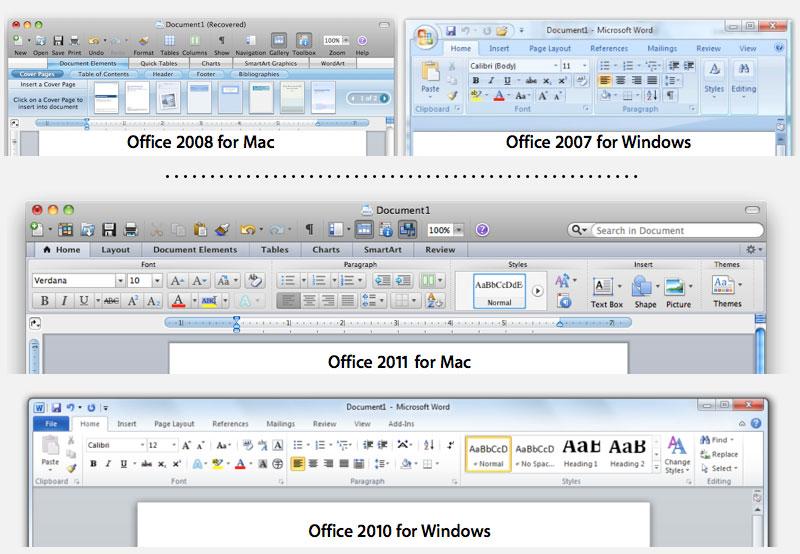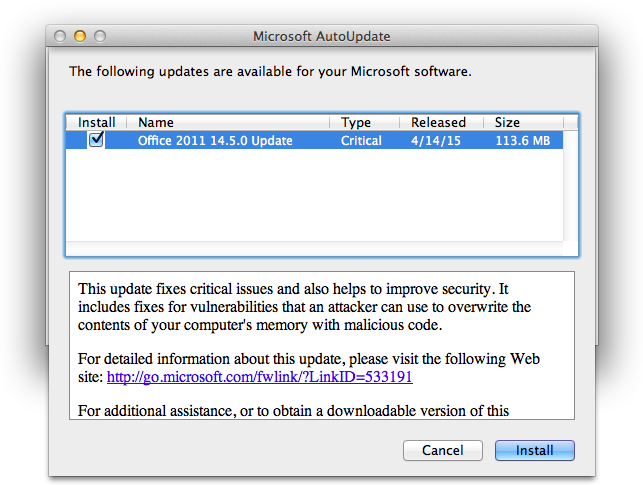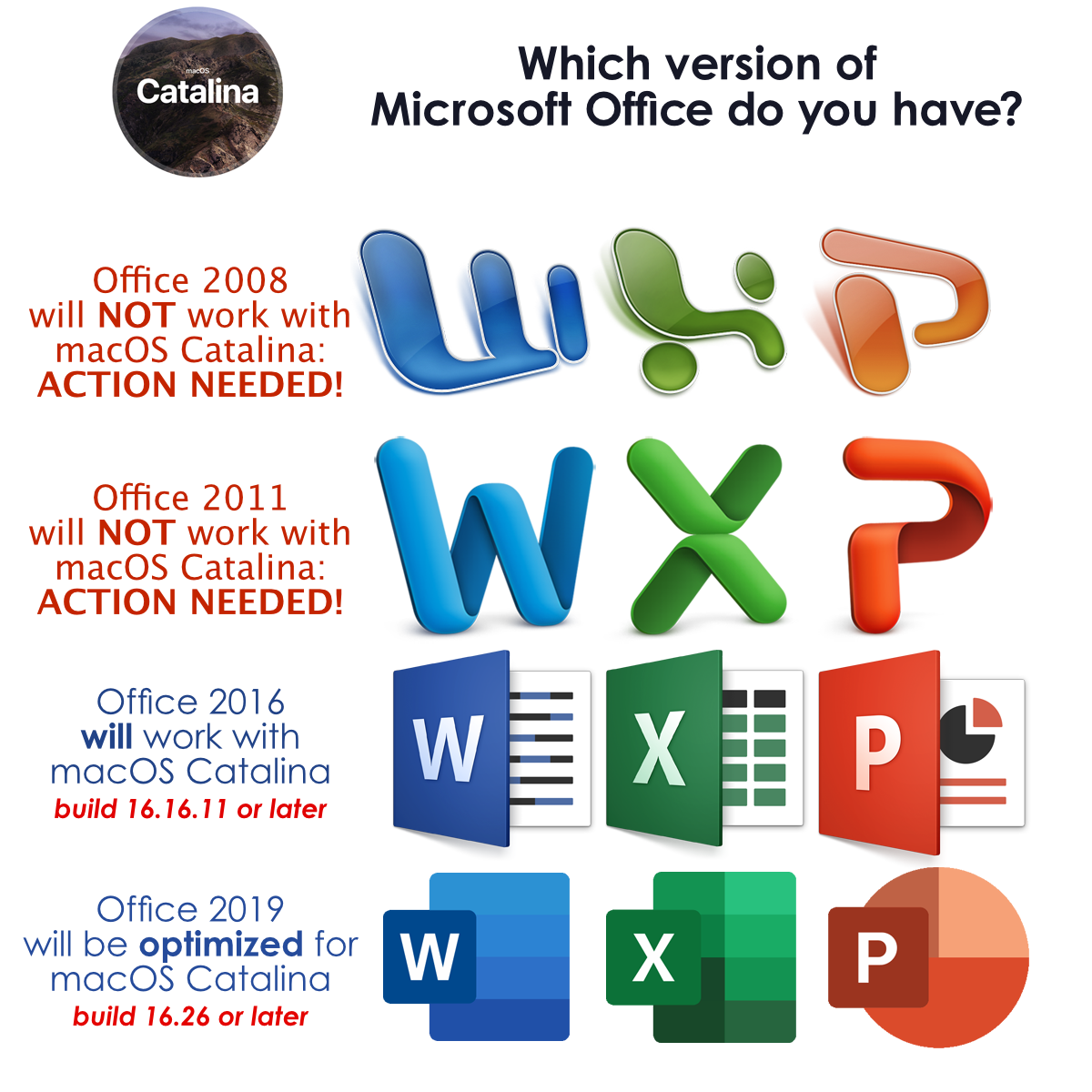Microsoft announced today it will be taking preorders for Microsoft Office 2011 for Mac.Microsoft says this major update will bring the Mac version of its office suite almost on par with the. Microsoft Office for Mac 2011 14.7.7 Update This update fixes critical issues and also helps to improve security. It includes fixes for vulnerabilities that an attacker can use to overwrite the contents of your computer's memory with malicious code. Our software library provides a free download of Microsoft Office 2011 14.7.7 for Mac. This Mac download was checked by our built-in antivirus and was rated as malware free. The latest installation package takes up 113.6 MB on disk. Microsoft Office 2011 for Mac lies within Productivity Tools, more precisely Office Tools. Microsoft made available this week an update to its Office for Mac 2011 product which includes some fixes, plus activation support so that it can be installed as part of Microsoft's newest Office. Microsoft's advice about Office for Mac 2011 wasn't unexpected, since support for the application suite is slated to end Oct. 10, a date Microsoft first stamped on the calendar two years ago, but.


After releasing their Office 365 subscription service and Office 2013 earlier today, Microsoft has released a critical update for Office for Mac 2011. The Office for Mac Service Pack 3 (14.3) update contains a number of bug fixes, and adds support for Microsoft’s new Office 365 subscription program.
From the release notes:

Microsoft has released an update for Microsoft Office for Mac 2011. In addition to the application improvements mentioned in this article, Office for Mac 2011 is now available as a subscription offering. For more information about subscription, see the Frequently Asked Questions.
This update provides the latest fixes to Office for Mac 2011. These include the following:
- Meeting invitation times are displayed inaccurately in Outlook for Mac
Fixes an issue that causes meeting invitation times from non-Exchange calendar servers to be off by one hour during certain times of the year. - Slides in collapsed sections cover other slides in Slide Sorter view in PowerPoint for Mac
Fixes a display issue that involves collapsed sections in Slide Sorter view. - Hash tags (#) in hyperlinks aren’t saved correctly in PowerPoint for Mac
Fixes an issue in which hyperlinks that contain hash tags (#) aren’t saved correctly. - Crash occurs when you use Paste Special with a partial table in PowerPoint for Mac
Fixes an issue that causes PowerPoint to crash when you use the Paste Special option to copy and paste part of a table. - RTF text that’s saved in PowerPoint for Windows can’t be pasted into PowerPoint for Mac
Fixes an issue in which RTF text that’s saved in PowerPoint for Windows can’t be copied and pasted into PowerPoint for Mac.
Microsoft Office 2011 for Mac Service Pack 3 is available now through Microsoft AutoUpdate, as well as direct download from Microsoft’s website.
Upgrade Mac Office 2011 To 365
How to get updates for macOS Mojave or later
If you've upgraded to macOS Mojave or later, follow these steps to keep it up to date:
- Choose System Preferences from the Apple menu , then click Software Update to check for updates.
- If any updates are available, click the Update Now button to install them. Or click ”More info” to see details about each update and select specific updates to install.
- When Software Update says that your Mac is up to date, the installed version of macOS and all of its apps are also up to date. That includes Safari, iTunes, Books, Messages, Mail, Calendar, Photos, and FaceTime.

To find updates for iMovie, Garageband, Pages, Numbers, Keynote, and other apps that were downloaded separately from the App Store, open the App Store on your Mac, then click the Updates tab.
To automatically install macOS updates in the future, including apps that were downloaded separately from the App Store, select ”Automatically keep my Mac up to date.” Your Mac will notify you when updates require it to restart, so you can always choose to install those later.
How to get updates for earlier macOS versions
If you're using an earlier macOS, such as macOS High Sierra, Sierra, El Capitan, or earlier,* follow these steps to keep it up to date:
- Open the App Store app on your Mac.
- Click Updates in the App Store toolbar.
- Use the Update buttons to download and install any updates listed.
- When the App Store shows no more updates, the installed version of macOS and all of its apps are up to date. That includes Safari, iTunes, iBooks, Messages, Mail, Calendar, Photos, and FaceTime. Later versions may be available by upgrading your macOS.
To automatically download updates in the future, choose Apple menu > System Preferences, click App Store, then select ”Download newly available updates in the background.” Your Mac will notify you when updates are ready to install.

* If you're using OS X Lion or Snow Leopard, get OS X updates by choosing Apple menu > Software Update.
How to get updates for iOS
Learn how to update your iPhone, iPad, or iPod touch to the latest version of iOS.
Learn more
2011 Microsoft Office For Mac Update
- Learn how to upgrade to the latest version of macOS.
- Find out which macOS your Mac is using.
- You can redownload apps that you previously downloaded from the App Store.
- Your Mac doesn't automatically download large updates when it's using a Personal Hotspot.
